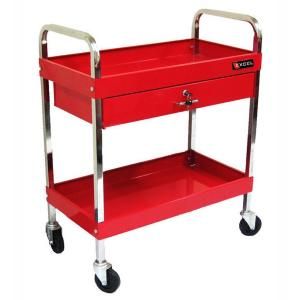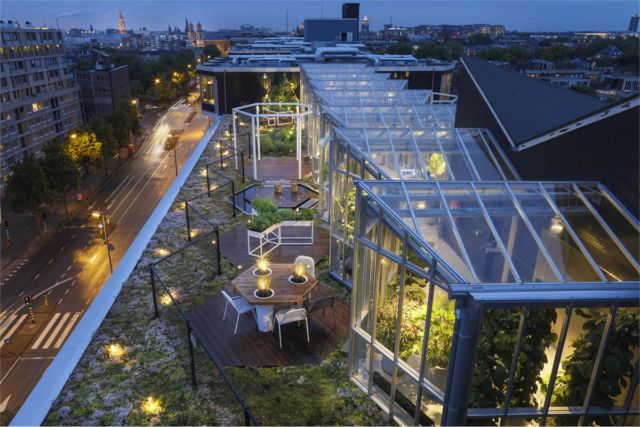By Chris Long

When you rent or live in an urban area, making a garden dream a reality can be a tricky endeavor. Either you don’t have a patch of grass at all or you don’t have a sunny spot to call your own because the available space is shared.
But a ‘green roof’ isn’t out of your grasp! Urban outdoor greenery is possible when you realize that a ‘raised bed garden’ can take on a whole new meaning.
And since upcycling is all about elevating items and making them into brand new things or using them in interesting new ways, here are some ideas for taking your greenery up a notch no matter where you live!
Rooftop Raised Bed Garden
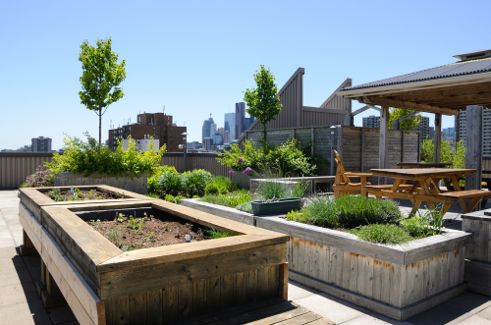
If you have the space and appropriate roof loading requirements, a traditional raised bed garden on the rooftop can be a wonderful burst of freshness in an otherwise concrete jungle.
Once you have the appropriate approvals from the building manager or your landlord, consider building a sub irrigated planter (SIP) within your raised bed garden.
An SIP bed is one in which the watering occurs below the soil through a mechanism of pipework or duct-like channels to reach the various roots. This type of raised bed garden will facilitate fuller growth of your plants and flowers resulting from a more efficient watering process because the water is contained underneath the surface rather than exposed to the air where much of it falls victim to evaporation or runoff.
And creating one is not nearly as complicated as it sounds. Here are some quick tips for putting together your own SIP raised bed on your roof.
- The key to an effective SIP is the use of perforated corrugated drain pipes, which eliminate the need for a wicking material because the soil surrounding the slotted pipes acts as the capillary transmitter of water to roots.
- Line your planter box with drain pipes that cover the bottom of the box and insert a fill pipe directly into one of the drains. This fill pipe is the means with which to water your plants, and since it is connected to the drain on the bottom of the box, the water goes directly to the soil and right to the roots. This fill pipe can be a narrow tube that extends from just above the surface of the soil in the box into the drain pipe below.
- Finally, make sure to cut an overflow drain hole into the raised bed box to prevent overwatering.
- Once you have your exit and entry points sorted out and your drain pipework in place, you can cover the pipes with your soil and plant your raised bed garden!
Just Hanging Out
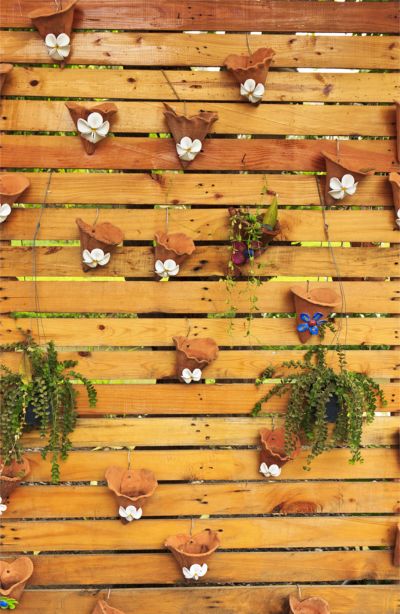
Even if you only have a wall at your disposal and no horizontal surface area of which to speak, take your garden vertical by implementing a ‘living wall’ of sorts on a budget, incorporating ferns and hanging plants and unconventional display methods, like wire or planters affixed between wooden slats.
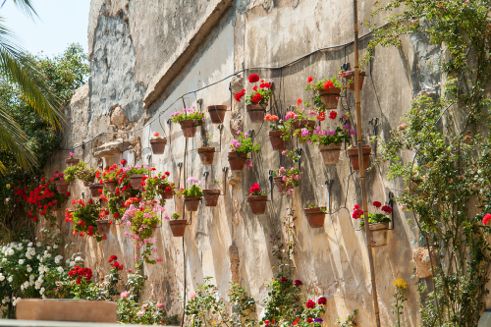
Once again, as long as you have a means for drainage implemented in your planters, and you observe the care and maintenance specifications for your individual plants, you can have a thriving wall of greenery all year long.
‘Planters on Wheels’
When you are moving your garden outdoors, make sure you have a means to bring your plants back inside when colder or inclement weather rolls in.
Purchase a dolly or utility cart that can also help you with your watering if you do not have a readily available source of water where you’ve planted.
Additionally, you can use the cart to easily move your plants around if the sun access varies greatly during the day — for example, if a roof structure (like a chimney or air conditioning unit, etc.) blocks the sun after a certain time of day.
Finally, if you don’t have a separate place to store the cart, if you choose a weather-resistant one that coordinates with your plants, you can leave it outside as an accent piece until it’s time to roll it back in.
Creative Planters
Once you take care of the technicalities, the sky and your imagination are the limit for what you can plant!
Check out some of these ‘out of the garden box’ and out of the ordinary planters that provide a burst of growth even when traditional roof garden conditions aren’t ideal.
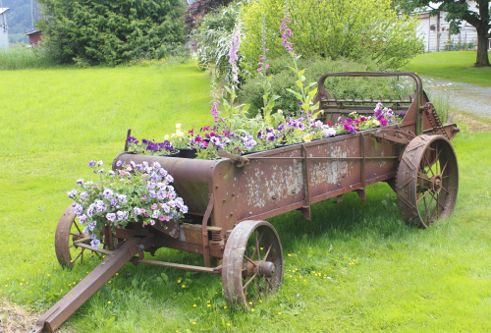
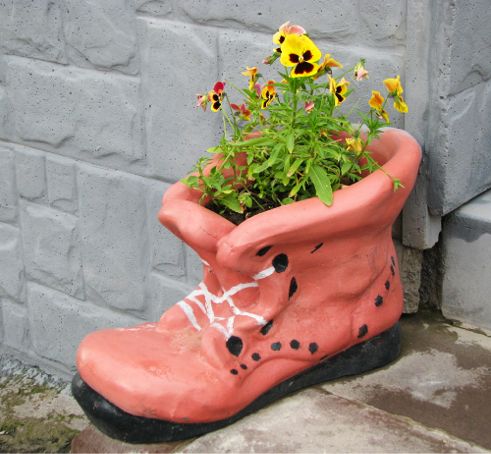
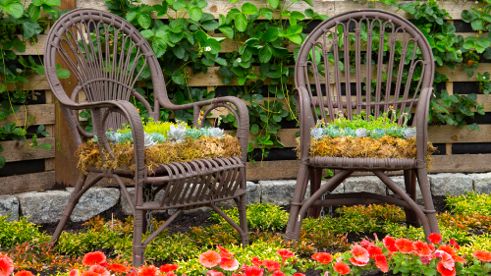
Alright, so this last one isn’t something you’re likely to find on the roof but it’s too cool to ignore!
What are some of the unique ways you have created a green roof or window ledge when urban space and finances were scarce?

Chris Long, a Chicago-area Home Depot associate, is a regular contributor to The Home Depot blogs on many Green topics. Chris enjoys giving tips on a range of topics, such as raised bed gardening and green lawn care maintenance. Contact Chris through his Pinterest page.
 Greenroofs.comConnecting the Planet + Living Architecture
Greenroofs.comConnecting the Planet + Living Architecture
